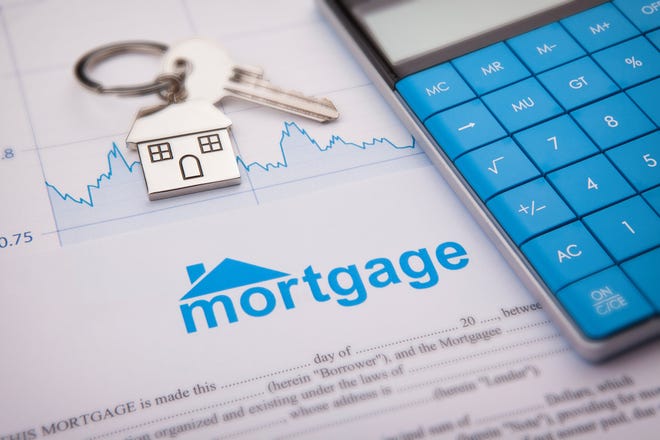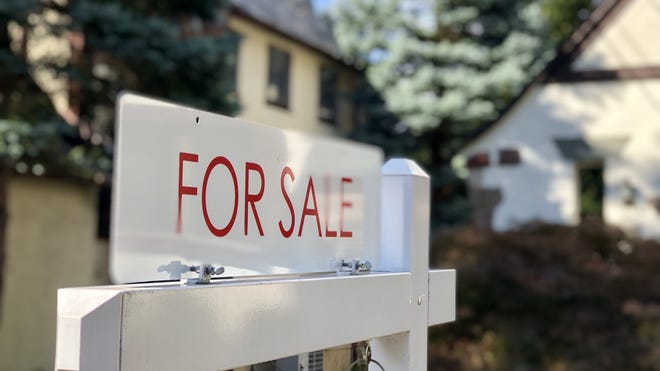Fannie Mae and Freddie Mac are implementing big reforms aimed at helping disadvantaged communities become homeowners and making sure homebuyers of color stay owners.
The initiative from the two federally backed home mortgage companies announced Wednesday is the most sweeping overhaul since the housing crash in 2008. Some of the big-ticket items exclusively reviewed by USA TODAY include assistance with down payments, reserve funding for homeowners’ emergencies andlower mortgage insurance premiums.
Fannie Mae and Freddie Mac are also rolling out a new credit reporting system that factors rent payments into creditworthiness scores, one of the biggest systemic barriers experts say keep renters of color from being able to purchase a home.
“It’s really powerful, almost like the government is owning the problem,” said Naa Awaa Tagoe, acting deputy director for the Division of Housing Mission and Goals at the Federal Housing Finance Agency, the independent regulatory agency that oversees the secondary mortgage market, including Fannie Mae and Freddie Mac. “This is Fannie Mae and Freddie Mac saying, ‘Yes, there is an issue with equity in housing finance, and these are the steps we need to take to address them.'”

The three-year strategy also laid out plans to increase fairness in the underwriting process, address appraisal disparities in multifamily housing, and finance permanent supportive housing programs primarily geared at providing housing for people experiencing homelessness.
As part of the effort, Freddie Mac is expected to issue $3 billion in affordable housing bonds this year.
By 2024, Freddie Mac wants to fund the construction of 30,000 new multifamily units that allow credit-building for renters, accept housing choice vouchers and are designed inclusively for people with disabilities. They want to make the credit-building program available to 300,000 units.
The lender also wants to finance loan offerings in underinvested communities and neighborhoods at risk of losing affordability.
More:Unable to get a mortgage, millions of Americans turn to risky lenders, but at what cost?
By 2024, Fannie Mae has a target of 140,000 consumers completing the first-time homebuyer process with any provider and 90,000 completing Fannie Mae’s course.
Some of the measures already have been piloted. From September 2021 to May, about 2,000 applicants have benefited from Fannie Mae’s credit reporting system that takes positive rental payment history into account for building creditworthiness. About 50% of applicants were racial minorities.

Discrimination kicks people out of home buying process
Together with the Federal Housing Administration and Department of Veterans Affairs, Fannie Mae and Freddie Mac directly or indirectly guarantee 70% of single-family mortgage origination.
Neither Fannie Mae nor Freddie Mac services loans. Instead, both organizations purchase mortgages from lenders to hold, sell or repackage as securities. That helps originate more loans and increase the stable supply of mortgage dollars.
Leading up to the 2008 housing market crash, Fannie Mae and Freddie Mac pumped more money into the housing financing system and bought an outsized number of mortgage loans, which helped inflate ballooning home prices. After the Great Recession of the late 2000s, both were placed into conservatorships.
In the United States, homeownership has long been viewed as the single most important vehicle for wealth accumulation.
The median net worth of white families who are homeowners was $300,000, of which $130,000 was attributed to housing, according to the 2019 Survey of Consumer Finance, the most recently available. That number decreases to $113,000 for Black families who are homeowners, of which $67,000 is derived from home equity. And for Latino families, roughly $95,000 of their median net worth of $165,000 is tied to owning a home.
Homeownership has historically remained out of reach for people of color because of decades of disinvestment and racist practices such as redlining, which allowed banks to limit loans, mortgages and insurance in geographic areas based on race and ethnicity.
As a result, the gap in homeownership rates between Black and white families is bigger today than when segregation was legal, according to a study by the Urban Institute. About 71% of white Americans own homes, compared with 41% of Black Americans.

“The depth of racism involved in past housing regulation is profound and persistent and is embedded in the fabric of America’s housing market to this day,” said David Clunie, executive director of Black Economic Alliance, a coalition of nonpartisan business leaders and advocates committed to economic progress in the Black community. “Our entire economy will benefit from increasing access to affordable homeownership.”
For Tagoe, it’s all the more reason why the initiatives are groundbreaking.
“It’s a big number, when you think about the gap. But how do you get to that gap?” Tagoe said. “So it’s multiple points along the way. These are complex issues. And that’s why, you know, we need these plans; we need really thoughtful, comprehensive approaches to solving the problem because it’s a difficult problem.”
Housing prices soar nationwide
The announcement from Fannie Mae and Freddie Mac comes as median home prices and rents across the country skyrocket.
In the first quarter of this year, the median price of a home reached a record $428,000, according to the Federal Reserve Economic Data database, known as FRED.
Rent year-over-year increases have soared 90% across the nation, the most recent analysis by Rent.com found. In some markets, such as Austin and Oklahoma City, rents have shot up more than 112%, two years after a pandemic recession put nearly 40 million people at risk for eviction.
A majority of Americans also believe it’s a bad time to buy a house for the first time since 1978.
According to a new poll by Gallup, only 30% of U.S. adults said it was a good time to purchase a home, driven by an annual inflation rate that accelerated to 8.5% in March and interest rates for 30-year fixed mortgages that climbed above 5%, up from 3% in 2020.
Taken together, everyday Americans are looking for relief in a priced-out housing market that has exacerbated inequities.
“Let me leave it on the record as it’s about time,” said James Carras, adjunct lecturer in public policy at Harvard University’s Kennedy School of Government in Cambridge, Massachusetts. “This is what they should have been doing all along. And it’s a good first step.”
View Original Article From USA Today Here
Sorry we are experiencing system issues. Please try again.



